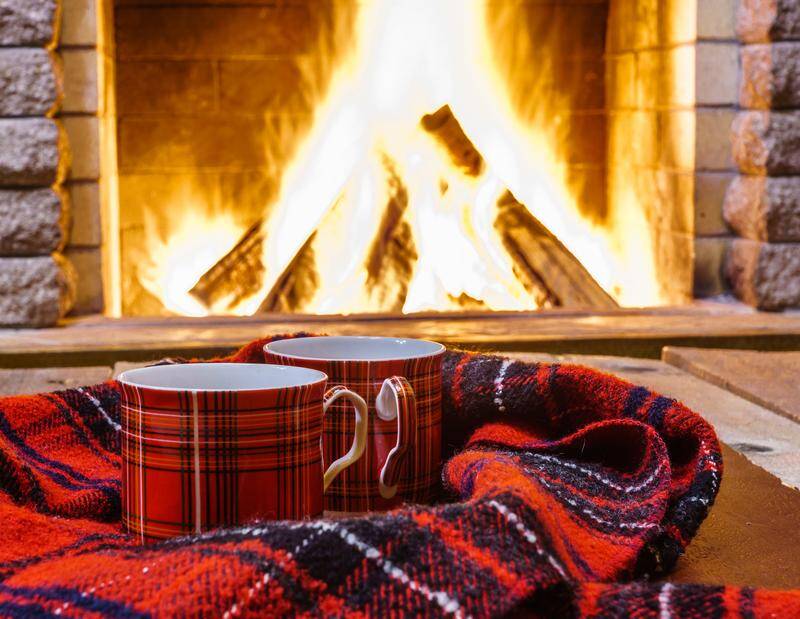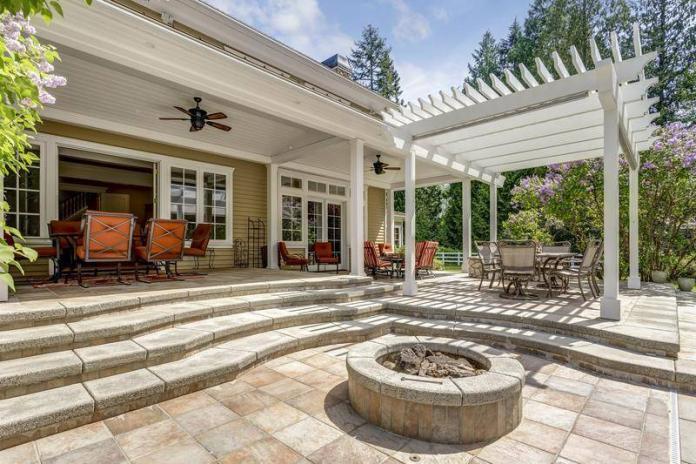As the weather turns cold, the first thing many people think to do is to bump up the thermostat. That can do a pretty good job of heating your house, but it also has a tendency to raise your power bill. Fortunately, there are things you can do to stay warm in your home without touching your thermostat.
Insulate
A properly insulated home is far more efficient when it comes to retaining heat. Doors and windows can be huge sources of heat loss, especially if there are cracks in the frames or any sealed areas. Repair any cracks as needed. If you notice that your windows are leaking too much heat still, try adding some extra insulation to them. Purchasing thermal curtains to cover the windows is one option. If you don’t want to spend the money, try hanging blankets over them instead. The extra layers will help you retain more heat for longer. You should also make sure your attic is properly insulated to avoid losing heat through your roof.
Keep Blankets in Every Room
If you’re going to resist the temptation to turn up the heat, you need to have other ways to stay warm close to hand. Keep a blanket in every room so you have one you can cover up with when you get cold. Snuggling under a blanket can be amazing, especially if it’s made from soft, comfortable fabric that’s ideal for winter blankets. For best results, choose blankets that are relatively easy to care for when they get dirty.
Use Area Rugs
For rooms or houses with hardwood floors or tiles that get cold, try laying down area rugs. This can be a good way to keep your floor from being quite so cold on your feet. Thicker rugs will do a better job at insulating the floor and keeping your feet warm. For even better results, choose rugs with higher stitch counts. These rugs are denser and, combined with the thickness, will do an even better job of insulating the floor. Don’t forget to take the material into consideration too. Wool, cotton, nylon, and acrylic are all options that provide a good amount of insulation. Wool is the coziest, though it tends to be more expensive and high maintenance. Remember to measure the size of the room you’re putting the rug in as well as the rug itself. You don’t want the rug to be too big, but the more floor coverage you have, the warmer you’ll be able to keep the floor.
Upgrade Your Fireplace
If your home has a fireplace, upgrading it may be a good way to increase both its efficiency and safety. A good cleaning is a good place to start. You can probably handle cleaning the hearth and cleaning out ash well enough on your own. You’ll need a chimney sweep to handle cleaning out the chimney though. This protects your safety by removing flammable deposits that may have built up over time. Installing a glass door can create a more efficient fireplace in your home. Tempered glass doors help concentrate heated air in the room and also double as a protective barrier between people and the flames. Additionally, you might consider installing a fireplace insert. They tend to look quite nice and be incredibly efficient.
Make Cooking Work For You
You may have noticed during the summer that your stove and oven have a tendency to heat your already too-warm house. Make that work for you during the winter by using these appliances when you cook. For an added boost of heat, try leaving the oven open after you turn it off, but only if it’s safe to do so. Consuming the warm foods or beverages you have made will also help you stay warm by warming you from the inside out.
Reverse Your Ceiling Fan
Did you know your ceiling fan has two directions? Depending on the direction the blades are pushing the air, they can either help the room cool down or warm up. Reverse your ceiling fan so that it rotates slowly with the blades pushing the air down. It should be moving in a clockwise direction. Since hot air rises, the gentle updraft your ceiling fan will be producing will help push the warm air back down to you.
Dress Warmly
How you dress can have a dramatic impact on how warm you are. Layering for cold weather is a great way to insulate yourself, and it isn’t just for being outside. If you’re trying to avoid turning up the heat, the same layering rules can come in handy indoors as well. Since you can easily add or remove layers, this is a great way to customize how warm you want to be. Consider the materials and their properties when layering for warmth. Thick socks or slippers can help keep your feet warm. Throwing on a jacket can help keep your upper body warm. If you need additional insulation, add a pair of thermals under the rest of your clothes.
Use Microwavable Heating Pads
Maybe you just need a quick way to warm up cold fingers or toes, or you need a little extra help to generate warmth. Microwavable heating pads can do just that. They tend to be relatively inexpensive and are pretty easy to use. How you care for them will vary depending on what they’re made from, so make sure you read the care instructions before trying to clean them. If you don’t want to buy one, you can try making your own microwavable heating pad. This is a great option that allows you to customize your heating pad to suit your specific desires.
Using methods to stay warm aside from turning up the heat can do some good when it comes to managing your power bill. You can make your house work for you when it comes to staying warm, in addition to personal tactics to keep warm. Depending on how well these methods work, you may find yourself lowering the heat because you just don’t need it as much anymore.
Read this next: How to Make Your Home More Weatherproof This Winter










